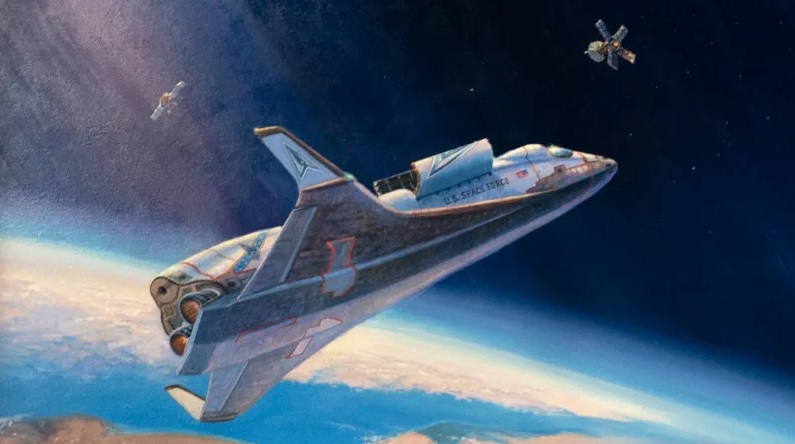America’s Experimental X-37B Embarks on Groundbreaking Aerobraking Maneuvers in Space

The U.S. Space Force's experimental X-37B spacecraft is on the verge of achieving a significant milestone in space technology. This small but mighty orbital test vehicle is set to demonstrate aerobraking, a maneuver that allows it to alter its orbit using Earth's atmosphere instead of relying heavily on traditional propulsion. This approach conserves fuel, allowing for longer mission durations and expanded operational flexibility—a crucial asset in an environment where resources are limited.
Aerobraking, a technique typically used by spacecraft when re-entering the atmosphere, involves using atmospheric drag to reduce speed and transition to a lower orbit. The X-37B will take advantage of Earth's thin upper atmosphere to slow itself down, making this method an innovative step in the realm of space exploration and satellite operations. For the Space Force, this move marks a new era of maneuverability in space, setting the stage for dynamic operations that could one day revolutionize space warfare, communications, and reconnaissance.
“This first-of-a-kind maneuver from the X-37B is an incredibly important milestone for the US Space Force as we seek to expand our aptitude and ability to perform in this challenging domain,” said General Chance Saltzman, Chief of Space Operations. His statement underscores how critical this test is in terms of advancing the Space Force's capabilities, particularly when it comes to countering threats in space, such as hostile satellites or potential space debris.
The X-37B, designed by Boeing, is a highly advanced orbital test vehicle that can operate at altitudes between 150 and 500 miles above Earth. One of the key innovations of the X-37B is its composite structure, which is lighter and more fuel-efficient compared to aluminum-based designs used in other spacecraft. This lightweight build enables the X-37B to perform intricate maneuvers like aerobraking with greater precision and less fuel consumption.
Boeing Vice President for Space Mission Systems Michelle Parker expressed optimism about the test, highlighting how the X-37B continues to push the boundaries of what is possible in space operations. “There is no other space platform as capable, flexible, and maneuverable as the X-37B, and its next demonstration will be another proof point that this test vehicle sets the pace of innovation,” Parker stated. This comment hints at the broader strategic importance of the X-37B—not just as a test vehicle but as a potential game-changer for future space missions.
The upcoming aerobraking test is not only about changing orbits; it also involves demonstrating safe disposal of the spacecraft’s service module components. This aligns with international guidelines aimed at reducing space debris, an increasingly pressing issue as more objects enter Earth’s orbit.
As space becomes more crowded and contested, the ability to perform fuel-efficient, rapid maneuvers like aerobraking will be essential for maintaining the upper hand in space-based operations. The X-37B’s success in this area could pave the way for future missions that require rapid orbital shifts, whether for surveillance, communication, or even to avoid hostile actions in space.
The X-37B has already proven itself with several long-duration missions, staying in orbit for over two years at a time. Its ability to perform complex tasks autonomously makes it an invaluable asset to the U.S. military and space exploration community. The spacecraft's reusability adds to its strategic advantage, reducing costs and ensuring that new technologies can be tested and refined across multiple missions.
If the aerobraking test succeeds, it will not only enhance the X-37B’s capabilities but also solidify its place as a leader in space innovation. Such technology could offer strategic advantages in countering threats, whether from space debris or adversarial satellites, while opening the door to longer, more efficient missions in space.
In a future where space is likely to become a major theater for defense and technological competition, the X-37B’s ability to dynamically adjust its orbit and conduct extended missions could give the U.S. Space Force a significant edge.


